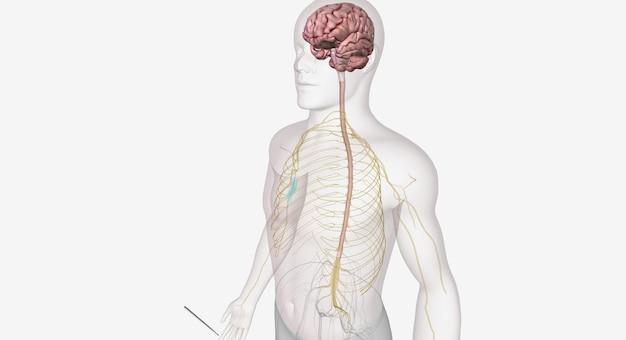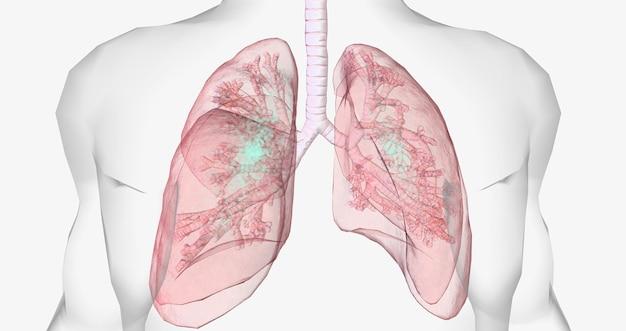Action potentials are the electrical signals that allow our bodies to send information through neurons. They play a crucial role in transmitting messages across the nervous system, enabling us to experience sensations, move our muscles, and process information. But where do these action potentials actually originate?
In this blog post, we’ll explore the fascinating world of action potentials and uncover their mysterious origins. We’ll delve into the concepts of depolarization and repolarization, dissect the all-or-nothing rule, and unravel the difference between graded potentials and action potentials. Along the way, we’ll answer burning questions like what triggers depolarization and whether action potentials are truly all-or-none.
So, grab a cup of coffee and join us on this electrifying journey as we uncover the secrets of where action potentials originate. Get ready to dive into the intricacies of our nervous system and discover the fundamental mechanisms behind our ability to think, move, and feel. Let’s get started!
Where Does an Action Potential Originate
The Epic Search for the Origin of Action Potential
Have you ever wondered where an action potential originates? Is it hiding in some secret hideout, waiting to strike when the time is right? Well, get ready to go on an electrifying journey as we dive deep into the world of action potentials and uncover their mysterious origins.
The Neuron: The Ultimate Action Potential Source
To understand where an action potential originates, we need to start our quest at the heart of the nervous system—the neuron. Neurons are the superheroes of our bodies, transmitting information through electrical impulses. These specialized cells are the true powerhouses behind action potentials.
The Axon: The Long and Winding Road
Within the neuron lies a long and winding road called the axon. This slender structure serves as the highway for electrical signals to travel from one neuron to another. When an action potential is set into motion, it races along the axon like a speed demon on the open road.
The Gatekeepers of Excitability: Sodium and Potassium Channels
But wait, who controls this exhilarating ride? Meet the gatekeepers of excitability: the sodium and potassium channels. These tiny protein structures line the surface of the axon and play a vital role in generating and propagating action potentials.
When a neuron is at rest, these channels remain closed, making it electrically quiet. However, once a stimulus arrives, such as a touch or a thought, these channels swing open, allowing a surge of sodium ions to rush into the neuron. This influx of positive charge triggers the action potential, like flipping an “on” switch.
The All-or-Nothing Phenomenon: Action Potential Activation
Now that the action potential is activated, it’s time to witness the all-or-nothing phenomenon. Unlike a dimmer switch that can be set to various levels, an action potential is either full-on or completely off. There’s no half-hearted attempt here. It’s like a neuron saying, “I’m either in or out, baby!”
The Trigger Zone: A Sensitive Hotspot
To keep the action potential flowing smoothly, the neuron has a sensitive hotspot known as the trigger zone. This region, situated at the beginning of the axon, serves as the gatekeeper to determine whether an electrical impulse reaches the threshold for an action potential to kick in.
The Decisive Moment: Threshold Crossing
When the electrical signal reaches the trigger zone, it’s decision time. Will the neuron unleash an action potential, or will it reluctantly hold back? If the electrical signal surpasses a certain threshold, usually around -55 millivolts, the trigger zone sounds the alarm, and boom! The action potential is set into motion, ready to embark on its journey.
The Exciting Journey Begins!
And just like that, the action potential takes off, coursing through the axon at breakneck speed, like a race car zooming down a track. It can travel up to an impressive 120 meters per second, making Usain Bolt look like a leisurely walker.
So, where does an action potential originate? It all starts with the neuron, whose axon becomes the pathway for this electrifying phenomenon. With the sodium and potassium channels as gatekeepers, the action potential roars to life at the trigger zone, ready to embark on an exciting journey through the nerve fibers. Remember, every time you think, move, or feel, it’s all thanks to these awe-inspiring action potentials. So, next time you’re feeling electrified, give a nod of appreciation to the humble origins of action potentials.
FAQ: Where does an action potential originate
Welcome to our FAQ section on the topic of action potentials! We hope to answer all your burning questions in a fun and informative way. So, let’s dive right in!
What does the P wave stand for
The P wave on an ECG (electrocardiogram) represents the depolarization of the atria, which is the electrical activation that causes them to contract. Think of it as a little wave saying, “Hey, atria, it’s time to get pumping!”
Why are V1 and V2 negative in an ECG
In an ECG, V1 and V2 are positioned in such a way that they record the electrical activity moving away from the positive electrode. This means that the deflection they produce appears negative. But don’t worry, V1 and V2 are just a tad rebellious!
What does a healthy sinus rhythm look like
A healthy sinus rhythm on an ECG shows a nice, regular pattern of electrical impulses generated by the sinoatrial (SA) node. It’s like a perfectly choreographed dance routine performed by your heart’s electrical system. Smooth moves, heart!
What is a good resting heart rate by age
Ah, heartbeats, the symphony of our lives! A good resting heart rate can vary depending on age. Generally, for adults, a range of 60 to 100 beats per minute is considered healthy. But don’t worry, numbers can be a little fast or slow sometimes without causing a heart-stopping panic!
Which of the following is the most common location where action potentials originate
Drumroll, please! The most common location where action potentials originate is the axon hillock. It’s like the command center of a neuron, where all the action begins. Talk about a nerve-racking role!
What does depolarization mean
Depolarization is like a power surge in the world of neurons. It refers to the change in electrical charge across a cell membrane when positive ions rush into the cell, making the inside less negative (or even positive). It’s like the moment when everything flips, and the neuron gets ready to shout, “Incoming action potential!”
What is the definition of an action potential
Oh, action potential, the superhero of neuron communication! It is a brief electrical signal that travels down the axon of a neuron, enabling it to transmit information to other cells. It’s like a neuron’s way of shouting, “Hey, pay attention, something important is happening!”
What is the all-or-nothing rule
Life sometimes plays by all-or-nothing rules, and so do action potentials! According to this rule, once a neuron reaches a certain threshold, an action potential fires at full strength. There’s no half-hearted attempt here, it’s go big or go home!
Where do most graded potentials originate
Graded potentials, the flexible siblings of action potentials, usually originate at the dendrites or the cell body of a neuron. They’re like the warm-up acts before the main event. A little tease of electrical activity to get things going!
What triggers depolarization
Oh, the magic behind depolarization! It can be triggered by various stimuli, such as a neurotransmitter binding to a receptor or changes in the voltage across the cell membrane. It’s like a little spark that sets off a chain reaction of electrical excitement!
Is depolarization contraction or relaxation
Depolarization itself is not directly associated with contraction or relaxation. It’s more like the starting point for the dance. Contraction or relaxation occurs when the action potential reaches the muscle fibers or glandular cells. It’s all part of a coordinated performance!
What causes sinus rhythm
The conductor of the heart’s symphony is the sinus node, and it sets the pace of the sinus rhythm. As long as the SA node is functioning properly and sending out regular electrical signals, the heart follows the beat and maintains a sinus rhythm. Bravo, SA node, bravo!
How do you know if your sinus rhythm is normal
Good question! To determine if your sinus rhythm is normal, you’ll need an ECG performed by a medical professional. They’ll analyze the ECG and check for any irregularities or abnormalities. Remember, leave the ECG interpretations to the experts and let your heart keep doing its steady beat!
What is the difference between depolarization and repolarization
Ah, the dance of opposites! Depolarization is when the electrical charge of a cell becomes less negative (or even positive). Repolarization, on the other hand, is when the cell returns to its resting state and reestablishes the negative charge. It’s like a tango between positive and negative charges!
Is sinus rhythm good or bad
Oh, sinus rhythm, you little show-off! Sinus rhythm is generally considered good because it indicates that your heart is beating in a regular and coordinated manner. It’s like the rhythm of life playing sweetly in your chest. Keep up the good work, heart!
Where does an action potential originate
Ah, the million-dollar question! An action potential originates at the axon hillock of a neuron. It’s like the starting point of a grand adventure for the electrical signal, as it embarks on its journey down the axon, ready to transmit messages far and wide!
Are action potentials all-or-none
Absolutely! Action potentials are like decisive little messengers. They either fire at full strength or don’t fire at all. There’s no room for indecisiveness in their world. It’s like they follow the motto, “When it’s time to act, give it all you’ve got!”
How do you treat sinus rhythm
Treating sinus rhythm depends on the underlying cause or any associated symptoms. If there are no underlying issues and the sinus rhythm is normal, no specific treatment is required. However, for abnormal sinus rhythms or related conditions, medical intervention may be necessary. Leave the rhythm adjustments to the medical experts and keep grooving to your heart’s beat!
And there you have it, folks! We hope these FAQs have shed some light on the fascinating world of action potentials. Until next time, stay curious and keep those neurons firing!

